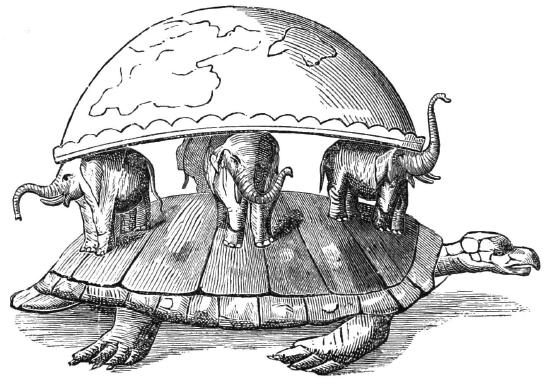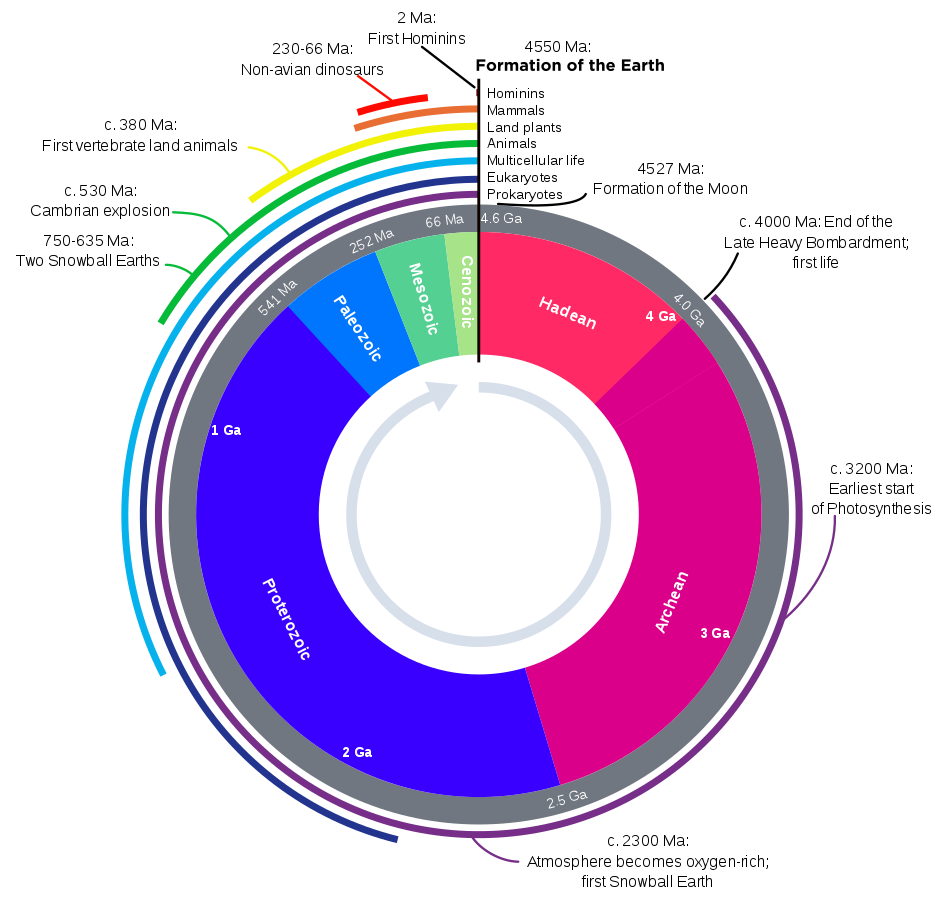9.6: Tools for Studying Evolution
- Page ID
- 16772
\( \newcommand{\vecs}[1]{\overset { \scriptstyle \rightharpoonup} {\mathbf{#1}} } \)
\( \newcommand{\vecd}[1]{\overset{-\!-\!\rightharpoonup}{\vphantom{a}\smash {#1}}} \)
\( \newcommand{\id}{\mathrm{id}}\) \( \newcommand{\Span}{\mathrm{span}}\)
( \newcommand{\kernel}{\mathrm{null}\,}\) \( \newcommand{\range}{\mathrm{range}\,}\)
\( \newcommand{\RealPart}{\mathrm{Re}}\) \( \newcommand{\ImaginaryPart}{\mathrm{Im}}\)
\( \newcommand{\Argument}{\mathrm{Arg}}\) \( \newcommand{\norm}[1]{\| #1 \|}\)
\( \newcommand{\inner}[2]{\langle #1, #2 \rangle}\)
\( \newcommand{\Span}{\mathrm{span}}\)
\( \newcommand{\id}{\mathrm{id}}\)
\( \newcommand{\Span}{\mathrm{span}}\)
\( \newcommand{\kernel}{\mathrm{null}\,}\)
\( \newcommand{\range}{\mathrm{range}\,}\)
\( \newcommand{\RealPart}{\mathrm{Re}}\)
\( \newcommand{\ImaginaryPart}{\mathrm{Im}}\)
\( \newcommand{\Argument}{\mathrm{Arg}}\)
\( \newcommand{\norm}[1]{\| #1 \|}\)
\( \newcommand{\inner}[2]{\langle #1, #2 \rangle}\)
\( \newcommand{\Span}{\mathrm{span}}\) \( \newcommand{\AA}{\unicode[.8,0]{x212B}}\)
\( \newcommand{\vectorA}[1]{\vec{#1}} % arrow\)
\( \newcommand{\vectorAt}[1]{\vec{\text{#1}}} % arrow\)
\( \newcommand{\vectorB}[1]{\overset { \scriptstyle \rightharpoonup} {\mathbf{#1}} } \)
\( \newcommand{\vectorC}[1]{\textbf{#1}} \)
\( \newcommand{\vectorD}[1]{\overrightarrow{#1}} \)
\( \newcommand{\vectorDt}[1]{\overrightarrow{\text{#1}}} \)
\( \newcommand{\vectE}[1]{\overset{-\!-\!\rightharpoonup}{\vphantom{a}\smash{\mathbf {#1}}}} \)
\( \newcommand{\vecs}[1]{\overset { \scriptstyle \rightharpoonup} {\mathbf{#1}} } \)
\( \newcommand{\vecd}[1]{\overset{-\!-\!\rightharpoonup}{\vphantom{a}\smash {#1}}} \)
\(\newcommand{\avec}{\mathbf a}\) \(\newcommand{\bvec}{\mathbf b}\) \(\newcommand{\cvec}{\mathbf c}\) \(\newcommand{\dvec}{\mathbf d}\) \(\newcommand{\dtil}{\widetilde{\mathbf d}}\) \(\newcommand{\evec}{\mathbf e}\) \(\newcommand{\fvec}{\mathbf f}\) \(\newcommand{\nvec}{\mathbf n}\) \(\newcommand{\pvec}{\mathbf p}\) \(\newcommand{\qvec}{\mathbf q}\) \(\newcommand{\svec}{\mathbf s}\) \(\newcommand{\tvec}{\mathbf t}\) \(\newcommand{\uvec}{\mathbf u}\) \(\newcommand{\vvec}{\mathbf v}\) \(\newcommand{\wvec}{\mathbf w}\) \(\newcommand{\xvec}{\mathbf x}\) \(\newcommand{\yvec}{\mathbf y}\) \(\newcommand{\zvec}{\mathbf z}\) \(\newcommand{\rvec}{\mathbf r}\) \(\newcommand{\mvec}{\mathbf m}\) \(\newcommand{\zerovec}{\mathbf 0}\) \(\newcommand{\onevec}{\mathbf 1}\) \(\newcommand{\real}{\mathbb R}\) \(\newcommand{\twovec}[2]{\left[\begin{array}{r}#1 \\ #2 \end{array}\right]}\) \(\newcommand{\ctwovec}[2]{\left[\begin{array}{c}#1 \\ #2 \end{array}\right]}\) \(\newcommand{\threevec}[3]{\left[\begin{array}{r}#1 \\ #2 \\ #3 \end{array}\right]}\) \(\newcommand{\cthreevec}[3]{\left[\begin{array}{c}#1 \\ #2 \\ #3 \end{array}\right]}\) \(\newcommand{\fourvec}[4]{\left[\begin{array}{r}#1 \\ #2 \\ #3 \\ #4 \end{array}\right]}\) \(\newcommand{\cfourvec}[4]{\left[\begin{array}{c}#1 \\ #2 \\ #3 \\ #4 \end{array}\right]}\) \(\newcommand{\fivevec}[5]{\left[\begin{array}{r}#1 \\ #2 \\ #3 \\ #4 \\ #5 \\ \end{array}\right]}\) \(\newcommand{\cfivevec}[5]{\left[\begin{array}{c}#1 \\ #2 \\ #3 \\ #4 \\ #5 \\ \end{array}\right]}\) \(\newcommand{\mattwo}[4]{\left[\begin{array}{rr}#1 \amp #2 \\ #3 \amp #4 \\ \end{array}\right]}\) \(\newcommand{\laspan}[1]{\text{Span}\{#1\}}\) \(\newcommand{\bcal}{\cal B}\) \(\newcommand{\ccal}{\cal C}\) \(\newcommand{\scal}{\cal S}\) \(\newcommand{\wcal}{\cal W}\) \(\newcommand{\ecal}{\cal E}\) \(\newcommand{\coords}[2]{\left\{#1\right\}_{#2}}\) \(\newcommand{\gray}[1]{\color{gray}{#1}}\) \(\newcommand{\lgray}[1]{\color{lightgray}{#1}}\) \(\newcommand{\rank}{\operatorname{rank}}\) \(\newcommand{\row}{\text{Row}}\) \(\newcommand{\col}{\text{Col}}\) \(\renewcommand{\row}{\text{Row}}\) \(\newcommand{\nul}{\text{Nul}}\) \(\newcommand{\var}{\text{Var}}\) \(\newcommand{\corr}{\text{corr}}\) \(\newcommand{\len}[1]{\left|#1\right|}\) \(\newcommand{\bbar}{\overline{\bvec}}\) \(\newcommand{\bhat}{\widehat{\bvec}}\) \(\newcommand{\bperp}{\bvec^\perp}\) \(\newcommand{\xhat}{\widehat{\xvec}}\) \(\newcommand{\vhat}{\widehat{\vvec}}\) \(\newcommand{\uhat}{\widehat{\uvec}}\) \(\newcommand{\what}{\widehat{\wvec}}\) \(\newcommand{\Sighat}{\widehat{\Sigma}}\) \(\newcommand{\lt}{<}\) \(\newcommand{\gt}{>}\) \(\newcommand{\amp}{&}\) \(\definecolor{fillinmathshade}{gray}{0.9}\)This interesting image is a 19th-century representation of Earth that is based on an ancient Hindu myth. According to the myth, Earth rests on the backs of elephants, which in turn stand on the back of a giant turtle. Virtually all human cultures and religions have developed myths about Earth and its origins. For example, until fairly recently, many Westerners thought that Earth was created in a day and that this occurred just a few thousand years ago. However, a diversity of evidence has since convinced the scientific community that Earth actually formed by natural processes from stardust a mind-boggling 4.5 to 4.6 billion years ago. Evidence also suggests that life first appeared on Earth up to 4 billion years ago and has been evolving ever since.

Earth in a Day

It can be difficult to wrap your mind around such vast amounts of time as the age of Earth and its early life forms. A useful way for envisioning the relative amounts of time that passed between Earth's origin and important events in biological evolution is to condense the total period of time to a 24-hour day, as shown in Figure \(\PageIndex{2}\). On this scale, Earth would have formed at midnight, and the first life would have appeared at about 3:00 a.m. Humans would have appeared only during the last minute of the day. If we are such newcomers on planet Earth, how do we know about the vast period of time that went before us? How have we learned about the distant past?
The Fossil Record
Much of what we know about the history of life on Earth is based on the fossil record, so this is an extremely important tool in the study of evolution. The fossil record is the record of life that unfolded over four billion years on Earth as reconstructed from the discovery and analysis of fossils. Fossils are the preserved remains or traces of organisms that lived in the past. The soft parts of organisms almost always decompose quickly after death. On occasion, the hard parts — mainly bones, teeth, or shells — remain long enough to mineralize and form fossils. An example of a complete fossil skeleton is pictured inFigure \(\PageIndex{3}\).

To be preserved as fossils, remains must be covered quickly by sediments or preserved in some other way. For example, they may be frozen in glaciers or trapped in tree resin or rock, like the frog shown in Figure \(\PageIndex{4}\). Sometimes traces of organisms — such as footprints or burrows — are preserved. The conditions required for fossils to form rarely occur. Therefore, the chance of any given organism being preserved as a fossil is extremely low.

In order for fossils to “tell” us the story of life, their chronology must be established. This means that fossils must be dated. Only then can they help scientists reconstruct how life changed over time. Fossils can be dated in two different ways, called relative dating and absolute dating.
- Relative dating determines which of two fossils is older or younger than the other, but not their age in years. Relative dating is based on the positions of fossils in rock layers. Lower layers were laid down earlier, so they are assumed to contain older fossils. This is illustrated in the figure below.
- Absolute dating determines how long ago a fossil organism lived, giving the fossil age in years. Absolute dating may be based on the amount of carbon-14 or other radioactive elements that remains in a fossil.

Molecular Clocks
Molecular clocks are also valuable tools for studying evolution. A molecular clock uses DNA sequences (or the amino acid sequence of proteins that DNA encodes) to estimate how long it has been since related species diverged from a common ancestor. Molecular clocks are based on the assumption that mutations accumulate through time at a steady average rate for a given region of DNA. Species that have accumulated greater differences in their DNA sequences are assumed to have diverged from their common ancestor in the more distant past. Molecular clocks based on different regions of DNA may be used together for more accuracy. Look at the comparisons of DNA in the table below. Based on these data, which organism do you think shared the most recent common ancestor with humans?
| Organism | Similarity with Human DNA (percent) |
|---|---|
| Chimpanzee | 98 |
| Mouse | 85 |
| Chicken | 60 |
| Fruit Fly | 44 |
Myth: Gaps in the fossil record disprove evolution.
Reality: Gaps in the fossil record, where transitional fossils between ancestral and descendant groups have not been found, are to be expected. The chances of organisms being fossilized are low. Some organisms do not preserve well, and conditions needed for fossilization are only rarely present. If evolution is occurring rapidly, the chances of transitional fossils forming are even lower. Even if fossils of transitional organisms do form, they must be discovered by researchers to be added to the fossil record. The vast majority of fossils have not been found. Researchers are studying the fossilization process to shed light on how much of the fossil record has not yet been discovered.
Fortunately, like fingerprints at a murder scene, the fossil record is just one type of evidence for evolution. In addition to fossils, molecular sequences and other types of evidence are all used together to reveal how life on Earth evolved.
Review
- Based on a 24-hour day, at what time did mammals evolve? How much of Earth's past had already taken place by that time? When did the first living things evolve?
- What is the fossil record?
- Why is the fossil record incomplete?
- Compare and contrast relative and absolute dating of fossils.
- Explain what molecular clocks can reveal about the evolution of life.
- Why is it important for the study of evolution to know a fossil’s relative age compared to another fossil?
- If fossil A is located above fossil B and fossil B is located above fossil C in different rock layers, arrange the three fossils in order of their likely age, from oldest to youngest.
- Which tool could you use to study the evolutionary relationships between species that are still alive?
- Carbon-14 dating
- Molecular clocks
- Relative position in the fossil record
- None of the above
- Use the History of Earth in a Day model above to answer the following questions.
- Which came first, free oxygen on Earth or the evolution of animals?
- During which geologic period did multicellular life evolve?
- About how much of Earth’s history had elapsed before eukaryotes evolved?
- What is the name of our current era?
- True or False. Fossils are always composed of actual tissue from extinct organisms.
- True or False. Absolute dating of fossils is usually done using a molecular clock.
Explore More
What would it look like if we took Earth's 4.5 billion year history and stuffed it into a normal day's 24-hour time frame? Check it out here:
Carbon dating allows us to estimate the ages of
material. Learn more here:
Attributions
- The Hindu Earth public domain via Wikimedia Commons
- Geologic clock by Woudloper, released into the public domain via Wikimedia Commons
- Thylacoleo skeleton by Karora, released into the public domain via Wikimedia Commons
- Fossilized frog by Kevin Walsh from Oxford, England, licensed CC BY 2.0 via Wikimedia Commons
- Relative dating of fossils by Jillcurie, CC BY-SA 3.0 via Wikimedia Commons
- Text adapted from Human Biology by CK-12 licensed CC BY-NC 3.0


